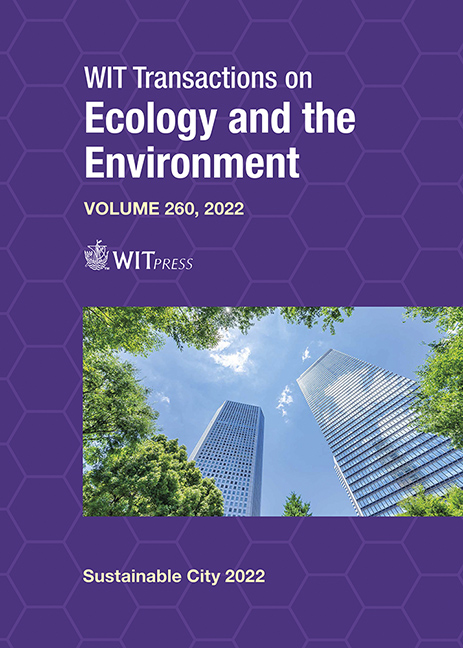CLOGGING OF HONEYCOMB CATALYSTS DURING STOVE OPERATIONS
Price
Free (open access)
Transaction
Volume
260
Pages
12
Page Range
67 - 78
Published
2022
Paper DOI
10.2495/SC220061
Copyright
Author(s)
JIŘÍ RYŠAVÝ, MARTIN GARBA, TEREZA KASZOVÁ, IZABELA ŠUDRYCHOVÁ, JIŘÍ HORÁK
Abstract
This research paper describes the pressure loss of the honeycomb catalyst with very high cell density caused by a gradual clogging by particulate matter produced during the real biomass stove operation. The chosen catalyst was placed in the flue gas duct right at the flue gas outlet of two combustion units. Experimental combustion tests were carried out on two stoves (automatic pellet stove and wood log stove). Both stoves were connected to real chimney with ceramic flue gas path creating real chimney draught to simulate real home use of the units. During the tests, the static relative pressure at the catalyst inlet and at the catalyst outlet was measured, from which the pressure loss of the catalyst was determined. During both long-lasting combustion tests, problems with the clogging of the catalysts occurred (after several days of operation). These problems may cause significant safety risk, which was to be solved. Consequently, the decreasing influence of catalyst on mass concentration of carbon monoxide (CO) during the catalyst clogging was observed. Obtained results confirm the importance of finding an appropriate connection between chosen catalyst and newly produced combustion equipment. Consequently, the obtained results confirm the importance of solving the clogging problem by installing the catalysts as the retrofitting systems for old combustion units in flue gas duct in some kind of easy cleanable bypass, such as the rotation one, or by using catalysts with lower cell density.
Keywords
catalyst, stove, biomass, combustion





